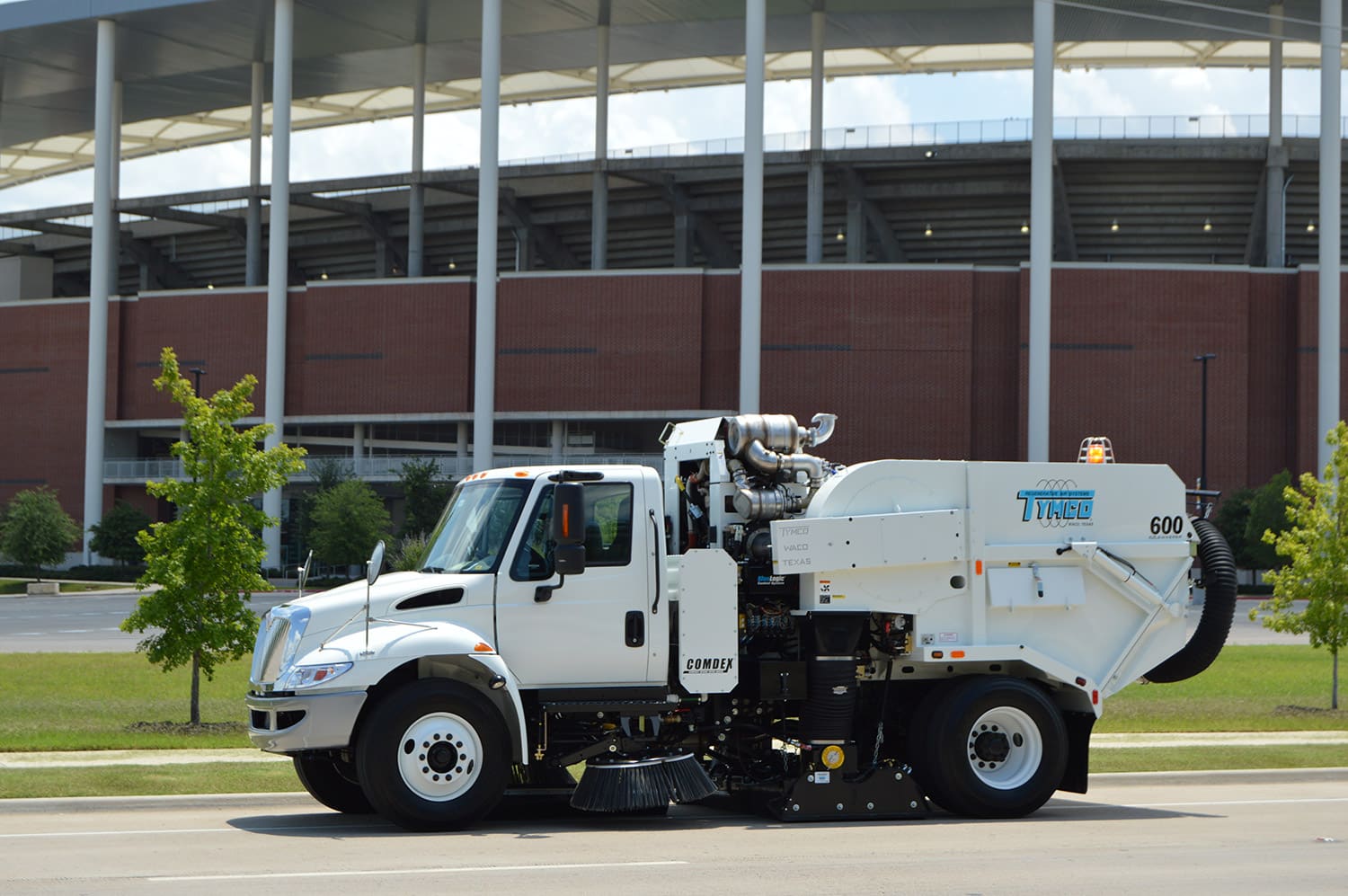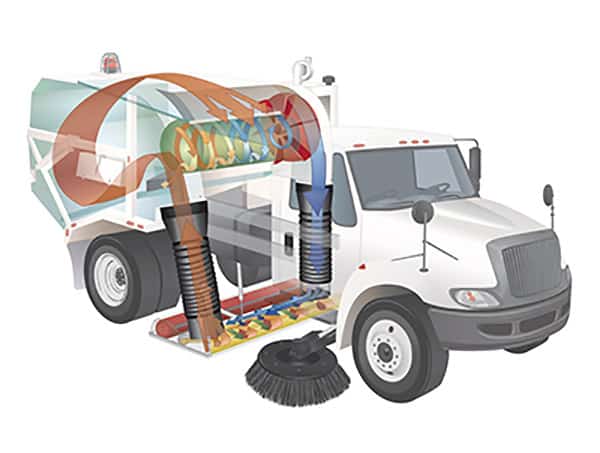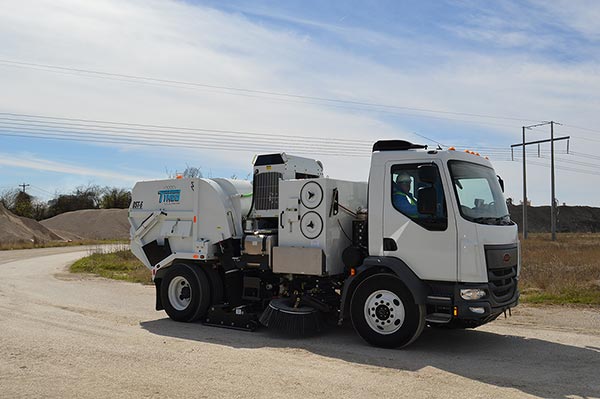Street Cleaning Technologies
Generally speaking, there are three types of street sweeping technologies that are recognized within the street sweeper industry. These technologies can be identified as Mechanical Broom Sweepers, Vacuum Sweepers and Regenerative Air Sweepers. These three fundamental technologies can each have unique variations to the technology that is implemented by a sweeper manufacturer. An example of this would be the “high-efficiency” modification.
Sweepers of all types commonly use gutter brooms to move dirt and debris into the path of the pick-up mechanism of the sweeper. To control fugitive dust, a series of water nozzles are typically used to spray a mist of water around brooms and within the sweeper hopper.

Mechanical Broom Street Sweepers
Mechanical sweepers are characterized by a rotating cylindrical broom, which flicks dirt and debris onto a conveyor moving it into a hopper for collection. Mechanical sweepers are the oldest type of sweepers, being invented in 1843. Early mechanical sweepers were horse drawn, and were first motorized in 1868. Modern mechanical sweepers perform well at picking up heavy material such as coarse sand and gravel, but are less effective at picking up finer material. The abrasive nature of the mechanical broom breaks down larger particles into smaller particles, making them more susceptible to washoff during storm events. Furthermore, mechanical brooms are less effective at penetrating cracks and potholes in pavement, potentially leaving material behind.
Vacuum Street Sweepers
Vacuum sweepers first appeared in the 1920s, and use an engine powered fan to create suction. Typically, a windrow broom moves dirt into the path of a vacuum nozzle, where dirt and debris are sucked into a hopper. The large volume of the hopper causes the heavier material to fall, while a screen traps lighter material such as leaves, before the air is exhausted. Vacuum sweepers are better at picking up finer material than mechanical sweepers, but share many of the same disadvantages, because the windrow broom is less effective at penetrating cracks and potholes in the street, and the suction nozzle typically only covers about 1/3 of the width of the sweeping path. Vacuum exhaust can also emit a significant amount of dust to the atmosphere.
Regenerative Air Street Sweepers
Regenerative Air Sweepers, invented in the mid-1960s by TYMCO founder B.W. Young, use an engine to power a blower, which pushes air through a blast orifice across the entire width of a pick-up head, which covers the entire width of the sweeper. The blast of air removes dirt from the surface, penetrating imperfections in the street such as cracks and potholes. Similar to a vacuum type sweeper, dirt and debris are sucked into a hopper, where the large volume of the hopper causes the heavier material to fall, while a screen traps lighter material such as leaves, but rather than being exhausted, the air is cleaned by a dust separator and then returned to the blast orifice of the pick-up head in a closed loop cycle. Regenerative air sweepers are better at picking up smaller particles than mechanical sweepers and vacuum sweepers, because the air blast/suction action of the pick-up head, which covers the entire width of the sweeper, reaches areas not accessible to cylindrical brooms.

High-Efficiency Street Sweepers
In the late 1970s, some sweepers began to use membrane filters for dust suppression. “High-Efficiency Sweeper” is a term used to describe sweepers of any of the main three types, which use filters to control dust emissions made up of ultrafine dust particles measured in microns. High-Efficiency Sweepers are sometimes referred to as “Dustless” or “Waterless” Sweepers because of their ability to sweep virtually dust-free while using little to no water for dust suppression.
These sweepers are useful in applications where water cannot be used for dust control such as freezing weather conditions, and picking up materials that harden and/or become caustic when wet. TYMCO began using this technology in their Model 600DC (the predecessor to the Model DST-6) in the early 1980s. The TYMCO Models DST-4 and DST-6 utilize filters that have been determined through independent laboratory testing using the American Society of Heating, Refrigerating and Air-Conditioning Engineers (ASHRAE) 52.2 testing standards to have a Minimum Efficiency Reporting Value (MERV) 16 Rating, meaning they are able to capture a minimum of 95% of 0.30 micron and larger size particles.

